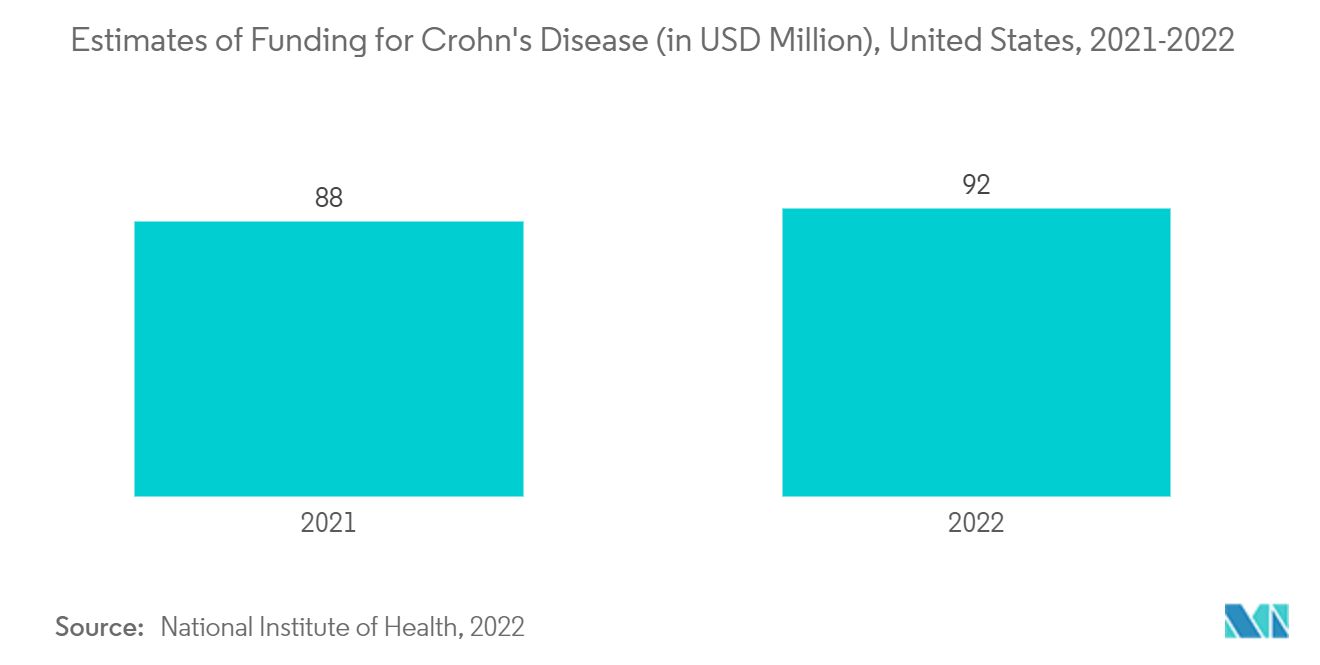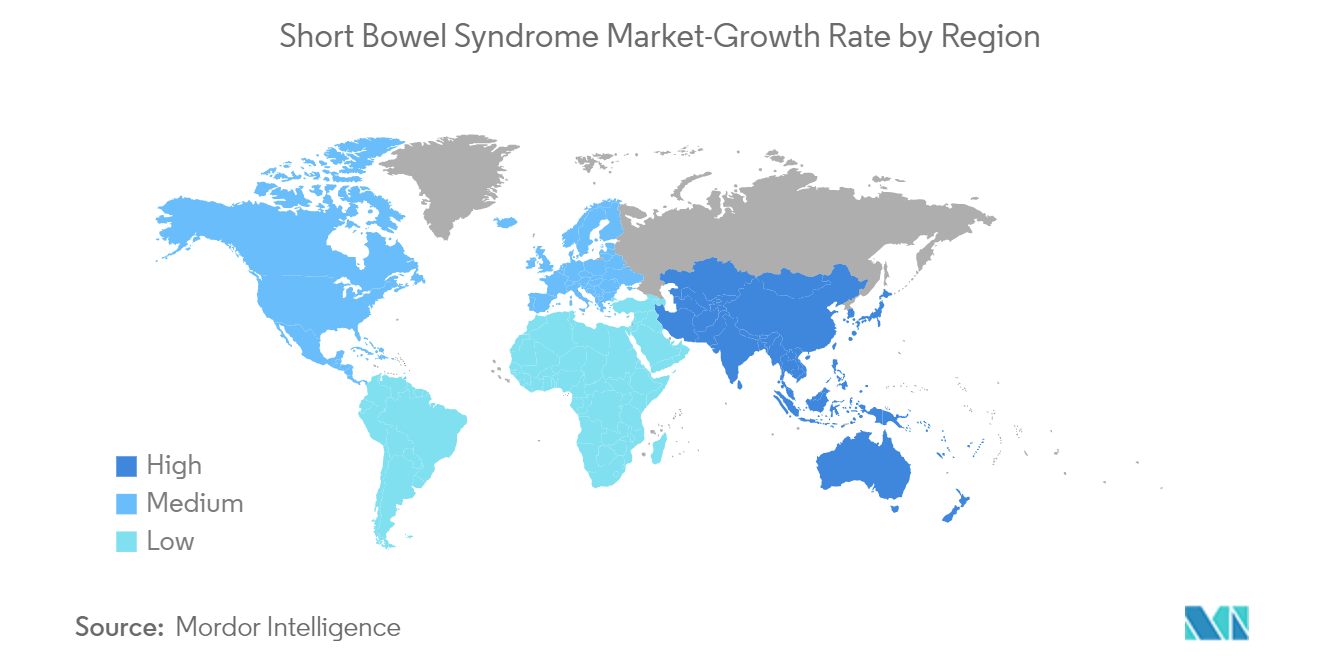Market Trends of Short Bowel Syndrome Industry
This section covers the major market trends shaping the Short Bowel Syndrome Market according to our research experts:
GLP-2 Drug Therapy is Expected to Hold a Significant Market Share Over the Forecast Period
Glucagon-like peptide-2 (GLP-2) is a potent intestinotrophic growth factor with therapeutic potential for the prevention or treatment of short bowel syndrome (SBS). GLP-2 drugs regulate gastric motility, gastric acid secretion, and intestinal hexose transport and increase the barrier function of the gut epithelium.
The factors driving the segment's growth include the effectiveness of GLP-2 drugs in SBS, and the rising research for GLP-2 drugs for SBS, among others.
The rising research on GLP-2 drugs is expected to boost the growth of the market significantly over the forecast period. For instance, in September 2022, Zealand Pharma released positive results from a phase 3 study of Glepaglutide (a GLP-2 agonist) in patients with SBS. The treatment was assessed as safe and well-tolerated in the trial. Such initiatives of rising research are therefore expected to propel market growth due to increased development and approval of therapies,
Furthermore, according to the study published in the Journal of International Medical Research in March 2022, with the help of nutritional intestinal hormones, particularly glucagon-like peptide-2 analogs, intestinal rehabilitation in SBS patients has advanced significantly and provided strong support for the formulation of treatment guidelines for patients with SBS. Such studies are anticipated to drive segment growth over the forecast period due to the increased adoption of GLP-2 therapies in the management of SBS.
In addition, rising funding from the NIH for Crohn's disease is further expected to drive the segment growth. For instance, as per the NIH funding data in May 2022, the estimated funding for Crohn''s disease in United States in 2021 and 2022 were USD 88 million and USD 92 million respectively. Therefore the rising funding for Crohn's disease may drive the SBS market, as people with digestive disorders such as Crohn's disease are unable to use significant amounts of their small intestine and may develop short bowel syndrome (SBS).
Therefore, the factors such as the high importance of GLP-2 therapies and the research advancements in GLP-2 therapies are expected to drive the segment growth.

North America Holds a Major Share in the Market Studied and Expected to do Same Over the Forecast Period
North America is expected to hold a significant share in the overall Short Bowel Syndrome Market throughout the forecast period due to the rising prevalence of SBS, the increased sedentary lifestyle, increased healthcare infrastructure, and rising funding from the government on the research of Crohn's disease, among others.
According to the study published in UpToDate in November 2021, in the United States, there are about 120 cases of home parenteral nutrition per million people each year, with SBS accounting for about 25% of cases. Such a high prevalence of SBS in the United States is expected to drive the growth of the market due to the increased adoption of treatment for SBS in the region.
Rising grants from the government of the United States are expected to drive market growth in the region. For instance, in October 2021, funding of USD 1.9 million to examine SBS has been given to a researcher at Saint Louis University School of Medicine (SBS). With the help of this NIH grant, he will assess the effects of novel compounds he has been developing in preclinical models to see how well they can reduce multisystem injury in SBS.
Furthermore, the rising grants for inflammatory bowel syndrome in Canada are also expected to drive the market studied. For instance, in November 2022, the Canadian Inflammatory Bowel Disease Research Consortium (CIRC) awarded the inaugural CAD 1 million (USD 0.8 million ) grant from Takeda Canada Inc. support of high-quality and impactful clinical research to improve patient outcomes and quality of life for people living with inflammatory bowel disease (IBD) in Canada. This will lead to increased research on IBD and therefore lead to the development of therapies for SBS, as IBD is among the primary contributors to SBS. Such grants help in the development of novel molecules for SBS, thereby leading to increased approvals and adoption, driving the market growth.
Therefore, the increased funding for the research on IBD and SBS, and the rising prevalence of SBS are expected to drive market growth in the region.


